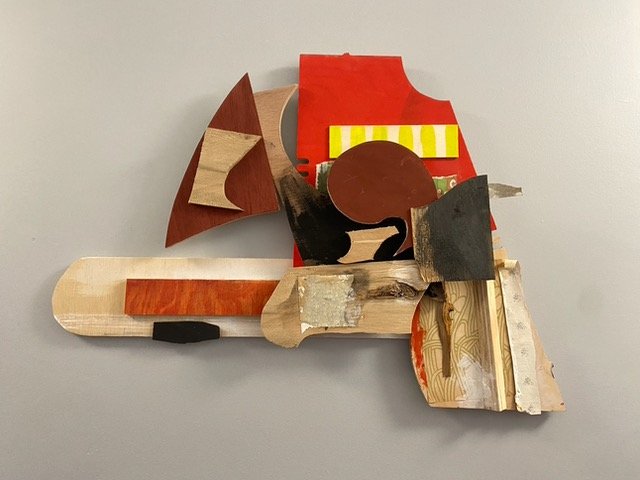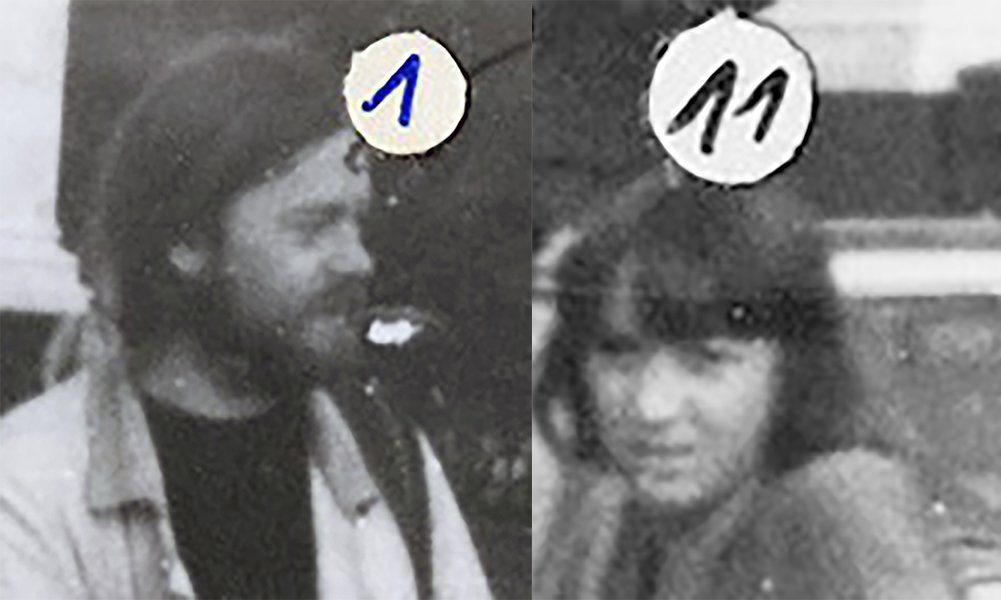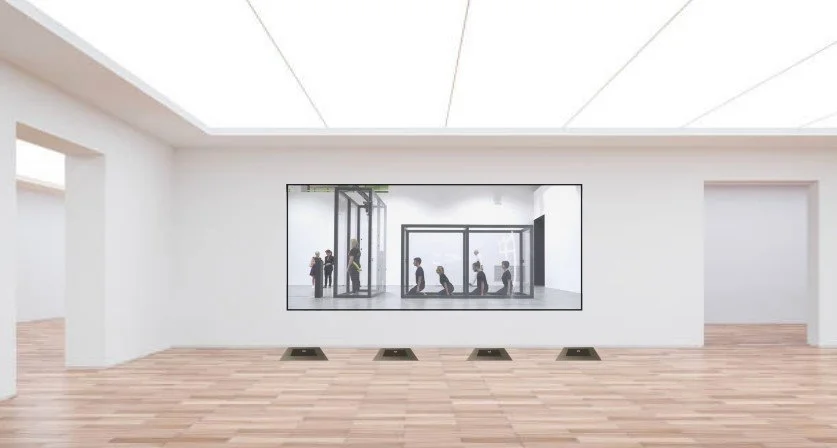Unconventional Conventions
2022 Group Exhibition
The Riverside Gallery is pleased to announce ‘The Unconventional Conventions’ exhibition, which will run from March 8th to 22nd, with the opening reception on March 12th from 5 to 7 pm.
‘The Unconventional Conventions’ is a group exhibition featuring 7 emerging artists working in unconventional modes of production of ideas and art objects, including Albert Abdur-Barr Wang, Andrew Wong, Chunbum Park, Ioannis Dimopoulos, Michael Ward Rosenbaum, Mark Andrew, and Sarah Shinyo Kim.
What equals the courage and conviction of Marcel Duchamp, who tested the Society of Independent Artists’ claim that it would not make any judgments on the artworks, with his urinal piece titled, “Fountain,” in 1917? What new ideas or approaches have been there since Robert Rauschenberg made the work titled, “Erased de Kooning Drawing,” in 1953? What are the patterns that defy the trends since Joseph Kosuth put a physical chair next to a definition of a chair next to a photograph of a chair in 1965? What is daring and sensational since Maurizio Cattelan taped a banana on a wall and titled it “Comedian?”
The beginning idea of ‘The Unconventional Conventions’ exhibition is that the “unconventional” modes of production and creation challenge the conventional methods, such as traditional painting or sculpture, by questioning the frame either around the work or on which the work is based. Only by changing the frame or getting rid of the frame through which the work is presented and viewed can the artist challenge the hidden and privileged modes of seeing (with images) and talking (with words) that shape our human perception and reality in relation to the art in question.
Artists such as Michael Ward Rosenbaum specifically ask what makes a painting a painting. Is it the frame around the painting that declares that the object is an artwork, and that the artwork is a painting? Can the forms and colors escape the frame around the object, or can the frame itself become the artwork itself? These are all highly interesting problems that have forced Rosenbaum to redefine what is a painting and to create a new body of work that he calls “Sculptural Paintings.”
Mark Andrew makes a similar inquiry in his attempt to address fragments of memory and trauma in his wall piece that was smashed and framed, titled, “Wände,” and assemblages titled, “Sunwood,” and “Kansas.” In regards to “Wände,” how can an ordinary object be transformed into an art object with aesthetic value? Is it the framing of the art, the emotional content that transforms the work, or both? In his abstract assemblages, Andrew assembles broken bits and pieces of different objects like a LEGO to give rise to materially-defined sensations of personal memory and experiences. The bits and pieces of the assemblage, such as broken wood, strings, stickers, and figurines, act as spatially and temporally adjacent elements that give qualitative descriptions or signify the events in the memory or experience.
Does changing the building block of the image or object change the inherent meaning of the work, or does it merely result in a substitution that perpetuates the original meaning? Sarah Shinyo Kim creates images and assemblages based on numerous groupings of emoticons. In her work, Kim replaces the emotional content of the art with the semantics and iconology of emoticons. The result is that her works convey emotions without the narrative and expressive elements that would normally support the emotions. Emoticons are a bridge between images and concepts/words, but they are ultimately an iconophilic invention, aimed towards the beautification of online communications on social networks. In Kim’s assemblages and paintings that blur the boundaries of the digital world and external reality, the many emoticons that contradict and complement one another show the fickle nature and the multitude of human experiences.
Likewise, Andrew Wong uses small rectangularly cut pieces of paper to create portraits of celebrities and turns them into NFTs (non-fungible tokens). Wong’s process simultaneously hides the hand of the artist but makes apparent the angular and abstracted nature of his visual language. Wong’s fragmented images simultaneously disrupt the Capitalist illusion of phantasmagoria that commodifies the living (and the dead) at the level of flesh and realness, and reproduce the illusion at the level of the iconic or fame and by engaging in the commercial aspects of making and selling the work as an iconic image.
On the other hand, Chunbum Park draws with their digital camera aimed at a light source on long exposure, to create symbolic images of women that they sometimes call a “constellation.” As an artist interested in gender fluidity and the traditional perceptions and roles of femininity, Park makes iconic drawings using this experimental method, which feel feminine to them in intuitive ways. Park also turns some of his photographic drawings and paintings into NFTs.
Albert Abdul-Barr Wang also works in conceptual photography, using found images from the Stasi secret police archive of East Germany to comment on the nature of the surveillance state before the digital era. The numbers marked on the figures in the photographs are a primitive method of identifying potential threats to the state power and equivalent to meta tagging or hash-tagging in today’s social media. The Stasi photos relate to the concept of the panopticon in a prison complex, in which the guard on the observation tower can watch every prison cell but the prisoners cannot see the guard inside the tower. The result of the constant surveillance, according to Foucault, is the mental and behavioral change of every individual inside a society.
Lastly, Ioannis Dimopoulos revisits his installation and performance piece from 2017 with his sequel titled, “Only now there is no lord and no brother.” The original work deals with the dark side of humanity, in which the audience pays $1 and enjoys controlling the subjects (who are also people) inside a claw machine. The new work revisits the previous work with a video projection and four plates as a part of the installation. Each plate has an envelope with a certificate of “non-authenticity” and a unique access code to virtual spaces which would be online for one year.
About the Artists:
Michael Ward-Rosenbaum is an artist from Philadelphia, Pennsylvania. His recent sculptural wall pieces deal with the absence of image, deconstruction of the painting surface and the psychology of art viewing spaces. His art making process is intuitive and influenced by repetition, chance, and a longing for resolution. The works are often shown in multiples and attempt to create immersive experiences.
Mark Andrew explores the external events that shape our collective lives — universal traumas, physical or psychological abuse, natural disasters, or climate change. Inspiration comes from that intersection where pop culture, beauty and ugliness collide.
Sarah Shinhyo Kim is a Korean-American artist currently living and working in the United States. As a way to explore human communication and relationships, Kim’s work focuses on the increasing popularization of ‘emoticon’ pop-imagery in the past decade. While these images, known colloquially as ‘emojis,’ are vehicles of individual emotional expression, their universal and semantically rich nature allows us to transcend cultural and linguistic barriers.
Andrew Wong, also known as 10past9, began working with cardboard boxes as a fun activity with his children to escape from the emotional stay-at-home order brought by the COVID-19 pandemic. This play turned into passion as he explored iterating these cut-out designs and models into more intricate forms. Using patterns of card stock within patterns of his subjects’ facial features, his work elegantly transforms simple materials into complicated portraiture, relief sculptures of deep lines, hidden surfaces, articulate shadows, and illuminated hues for the viewer to explore. Wong holds a BFA in Fashion Design from Parsons School of Design.
Chunbum Park, also known as Chun, is primarily a painter who primarily works with stylized figurations to comment about beauty, gender fluidity, the racialization of beauty, and anti-racist aesthetics. They also experiment with abstract photography and performance photography dealing with gender. They are currently an MFA thesis candidate at the Rochester Institute of Technology.
Albert Abdul-Barr Wang is a Salt Lake City-based conceptual photographer, fabric, tapestry, painter, sculptor, and installation artist. He was born in Brooklyn, New York City. His projects focus on historical and economic archives, glitches in artificial intelligence as related to Muslim identity, surveillance and linguistics, science fiction, capitalist machinery, Afro-linguistics, and the commodification of political violence through technology and social media.
Ioannis Dimopoulos is a multimedia artist and the Founder of the CDH-13 brand. His work explores the possibilities of Meta-Life and the impositions of rules and ethics nourished by Christianity, Democracy and gender. The use of sexuality, the possibilities of ones’ instincts and desires, the cruel and dark side of life and the raw exposition of the aforementioned are some of the subjects at his current work. Ioannis produces and directs installations, performances, lectures, cyberspaces and publications, often collaborating with scientists, Medical Doctors, lawyers and social workers.








